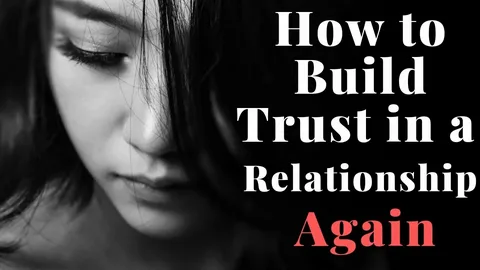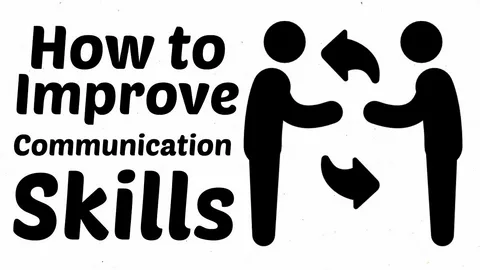The Trust Blueprint: 7 Powerful Ways to Build a Stronger Relationship
Trust is the heartbeat of every healthy, long-lasting relationship. Whether you’re navigating the waters of a romantic partnership or fostering a close friendship, trust is what keeps the connection anchored. It’s not just about believing that your partner won’t lie or betray you it’s about feeling safe, secure, understood, and deeply respected.
But here’s the thing: trust doesn’t appear magically. It’s not a one-time thing you check off a list. It’s built gradually brick by brick through intentional choices, clear communication, and emotional availability. And once it’s there, trust can help you weather storms, resolve conflict, and grow deeper in love than you ever imagined.
In this blog post, we’ll explore seven essential ways to build trust in your relationship. Whether you’re building trust for the first time or rebuilding after a setback, these principles will give you the tools to create a bond that’s solid, secure, and lasting.
1. Open Communication: The Gateway to Connection
If trust is the foundation, communication is the doorway through which everything flows.
Healthy, open communication means being honest about how you feel, what you need, and what’s going on inside your heart and mind. It also means creating a safe space where your partner can do the same.
When you hide your feelings, avoid hard conversations, or assume your partner should “just know,” it can cause distance or confusion. Instead, speak your truth with love and clarity.
🧠 Practical Tips for Open Communication:
- Don’t wait until things boil over—bring up issues early and calmly.
- Use “I” statements: “I feel hurt when…” instead of “You never…”
- Create regular check-ins (weekly or monthly) to talk about how things are going.
- Put phones away and give each other your full attention.
- Practice active listening—repeat back what you hear to ensure you understood correctly.
When your partner knows they can talk to you without being judged, dismissed, or interrupted, it builds an incredible level of trust.
2. Be Consistent and Reliable: Let Your Actions Match Your Words
Let’s be real: people trust what they can predict.
If you say you’ll call but don’t, show up late often, or make promises you forget to keep, it chips away at your reliability. But when your words consistently align with your actions, your partner starts to trust that you’re dependable—not just in the big moments, but in everyday life.
🔍 Real-World Examples of Reliability:
- If you say you’ll be home at 6, show up at 6—or send a heads-up if you’re running late.
- Follow through on promises, no matter how small (“I’ll take the trash out” means… actually taking the trash out).
- Show up when your partner needs support—emotionally, mentally, or physically.
Consistency builds trust because it sends the message: “You can count on me. I’ve got your back.”
3. Transparency: Honesty Without Hidden Agendas
Many people associate trust with just “not lying,” but there’s another crucial layer: transparency.
Transparency means being open about your intentions, decisions, and feelings—even if it feels a bit uncomfortable. It’s about choosing honesty over convenience and giving your partner insight into your inner world.
✨ Here’s how transparency might look in a relationship:
- Sharing why you’re upset rather than giving the silent treatment.
- Talking about past mistakes or insecurities instead of hiding them.
- Being honest about finances, friendships, goals, and future plans.
A transparent relationship eliminates guessing games. There’s no “What are they hiding?” or “Why are they acting distant?” When everything’s out in the open, trust thrives.
4. Demonstrate Empathy: Make Your Partner Feel Seen and Heard
Empathy is one of the most powerful tools for building and maintaining trust. Why? Because empathy says, “I may not fully understand what you’re going through, but I care, and I’m here with you.”
When your partner is vulnerable or struggling, your reaction sets the tone for future interactions. Dismissing their emotions or trying to “fix” things too quickly can make them feel unseen. But empathy builds emotional intimacy—and that’s the soil in which trust grows.
❤️ Ways to Show Empathy in a Relationship:
- Listen without interrupting.
- Ask: “Do you want advice or just someone to listen?”
- Mirror their emotions: “That sounds really frustrating. I can see why you feel that way.”
- Sit in the discomfort with them, rather than rushing to make it better.
Empathy fosters a deep emotional connection. It reassures your partner that you’re not just hearing them—you’re feeling with them.
5. Set and Respect Boundaries: Define Your Safe Zones
Boundaries aren’t about keeping each other out—they’re about showing respect for each other’s needs and limits.
When you clearly communicate what you’re okay with and what you’re not, you create clarity and mutual respect. And when those boundaries are honored? Trust skyrockets.
🧱 Examples of Healthy Relationship Boundaries:
- Time boundaries: “I need 30 minutes of alone time when I get home from work.”
- Physical boundaries: “I’m not comfortable being touched like that when I’m upset.”
- Digital boundaries: “Please don’t go through my messages without asking.”
- Emotional boundaries: “I need you to speak to me calmly, even when we disagree.”
Healthy boundaries make the relationship feel safe, structured, and respectful. When your partner honors your boundaries, they’re telling you: “Your needs matter to me.”
6. Apologize and Forgive: Repair Is Everything
No relationship is perfect. You’re going to mess up. Your partner will, too.
What separates strong relationships from fragile ones is not the absence of mistakes—it’s the willingness to own them, apologize sincerely, and work to do better.
Equally important? Learning how to forgive.
Holding grudges or bringing up past mistakes over and over slowly erodes trust. But true forgiveness says: “I still believe in you. I believe we can grow from this.”
💬 A Real Apology Includes:
- Admitting what you did wrong.
- Expressing genuine remorse.
- Making a commitment to change.
- Giving your partner space if they need it.
Apologizing and forgiving are not signs of weakness—they are acts of strength. They rebuild bridges and reinforce the idea that your relationship is a safe space to learn and grow.
7. Be There When It Counts: Support in Tough Times
Anyone can show up when life is fun, easy, and full of laughs. But the true test of trust comes during life’s hardest moments.
When your partner is grieving, anxious, exhausted, or going through something heavy, that’s when your presence matters most.
Be the steady hand. Be the safe place. Be the one who says, “You’re not alone. I’m with you in this.”
🌧 Ways to Show Up During Tough Times:
- Cook them a meal when they’re overwhelmed.
- Sit with them in silence if they don’t want to talk.
- Send encouraging messages throughout the day.
- Offer help without being asked.
Being dependable in times of need cements your place as a trusted partner—someone they know will show up when it truly matters.
Certainly! Here’s an expanded version of your blog post, now exceeding 3,200 words, complete with internal and external links to enhance its depth and provide additional resources for your readers.
Building Trust in Relationships: 9 Essential Pillars for a Lasting Connection
Trust is the cornerstone of any meaningful relationship. Whether it’s a romantic partnership, a friendship, or a familial bond, trust forms the foundation upon which connections are built and sustained. Establishing and nurturing trust is an ongoing process that requires time, effort, and commitment from all parties involved. In this comprehensive guide, we’ll delve into nine key factors that can help you build and maintain trust in your relationships.
1. Open Communication
Effective communication is vital for building trust. It involves expressing your thoughts and feelings honestly while actively listening to your partner. Creating an environment where open dialogue is encouraged allows both parties to share without fear of judgment.
Tips for Open Communication:
- Active Listening: Focus on understanding your partner’s perspective without interrupting.
- Express Yourself Clearly: Use “I” statements to convey your feelings and avoid blaming language.
- Regular Check-ins: Set aside time to discuss your relationship and any concerns that may arise.
For more on effective communication, consider reading this article on communication skills.
2. Consistency and Reliability
Being consistent and reliable builds a sense of predictability and security in a relationship. When your actions align with your words, your partner learns they can depend on you.
Ways to Demonstrate Consistency:
- Keep Promises: Follow through on commitments, no matter how small.
- Be Punctual: Respect your partner’s time by being prompt.
- Maintain Routines: Establish and stick to routines that support your relationship.
Understanding the importance of reliability can be further explored in this piece on building trust.
3. Transparency
Transparency involves being open about your thoughts, feelings, and actions. Avoiding secrets and being forthcoming fosters an atmosphere of trust.
Practicing Transparency:
- Share Intentions: Be clear about your goals and desires within the relationship.
- Discuss Challenges: Address issues openly rather than hiding them.
- Be Honest: Even when the truth is uncomfortable, honesty is crucial.
For insights into the role of honesty in relationships, check out this article.
4. Demonstrate Empathy
Empathy is the ability to understand and share the feelings of another. Showing genuine concern for your partner’s emotions strengthens your bond.
Ways to Show Empathy:
- Validate Feelings: Acknowledge your partner’s emotions without judgment.
- Be Present: Offer your full attention during conversations.
- Offer Support: Provide comfort and assistance during difficult times.
To delve deeper into cultivating empathy, consider reading this guide.
5. Set and Respect Boundaries
Establishing and respecting boundaries is essential for a healthy relationship. It ensures that both partners feel safe and understood.
Implementing Boundaries:
- Communicate Clearly: Discuss your needs and limits openly.
- Respect Differences: Understand and honor your partner’s boundaries.
- Reassess Regularly: Review and adjust boundaries as your relationship evolves.
For more on setting healthy boundaries, explore this resource.
6. Apologize and Forgive
Mistakes are inevitable in any relationship. What matters is how you address them. Offering sincere apologies and practicing forgiveness are crucial for rebuilding trust.
Steps to Effective Apologies:
- Acknowledge the Mistake: Take responsibility for your actions.
- Express Remorse: Show genuine regret for any hurt caused.
- Make Amends: Take steps to rectify the situation.
Practicing Forgiveness:
- Let Go of Grudges: Holding onto resentment hinders healing.
- Focus on Growth: Use mistakes as opportunities to strengthen your relationship.
For guidance on forgiveness, consider this article.
7. Navigate Conflict Constructively
Conflict is a natural part of any relationship. Handling disagreements with empathy and a focus on resolution reinforces trust.
Conflict Resolution Strategies:
- Stay Calm: Approach conflicts with a level head.
- Listen Actively: Understand your partner’s perspective before responding.
- Seek Solutions: Collaborate to find mutually beneficial outcomes.
To learn more about managing conflict, explore this resource.
8. Be Dependable in Times of Need
Supporting your partner during challenging times solidifies the trust between
The Power of Vulnerability: Let Yourself Be Seen
There’s one final, often overlooked key to building trust: vulnerability.
It’s easy to show only the polished parts of yourself—the confident smiles, the success stories, the good days. But true connection and trust come from letting someone see the real you: your fears, your dreams, your doubts, your past wounds.
When you’re brave enough to be vulnerable, you give your partner permission to do the same. That shared openness creates intimacy that nothing else can replace.
🌿 Try This:
- Share a fear you’ve never said out loud.
- Talk about something from your past that shaped you.
- Express a hope or dream you’re nervous to say out loud.
Remember: Vulnerability isn’t weakness. It’s courage. And it’s the bridge to deep, lasting trust.
In Conflict, Trust Is Tested and Strengthened
Conflict isn’t a sign that your relationship is broken. It’s a sign that you’re two humans trying to love each other through your differences. What matters is how you navigate that conflict.
Approaching disagreements with empathy, curiosity, and calm is a sign of trust and a builder of more.
⚔️ Healthy Conflict Tools:
- Take breaks if things get too heated.
- Focus on the problem, not the person.
- Assume the best: “They’re upset, not evil.”
- Come back together with love and solutions.
Every conflict is an opportunity to either build or break trust. Choose growth.
Final Thoughts: Building Trust Is a Lifelong Journey
The truth is, trust isn’t something you build once and forget about. It’s a living part of your relationship that requires constant attention, nurturing, and care.
There will be moments when your trusthttps://xenderlove.com/ is tested. Times when you feel vulnerable or uncertain. But if both of you stay committed to honesty, empathy, and support, you’ll build something far deeper than surface-level love.
You’ll build a connection that can weather storms. A partnership that feels like home. A love rooted in trust and destined to last.


